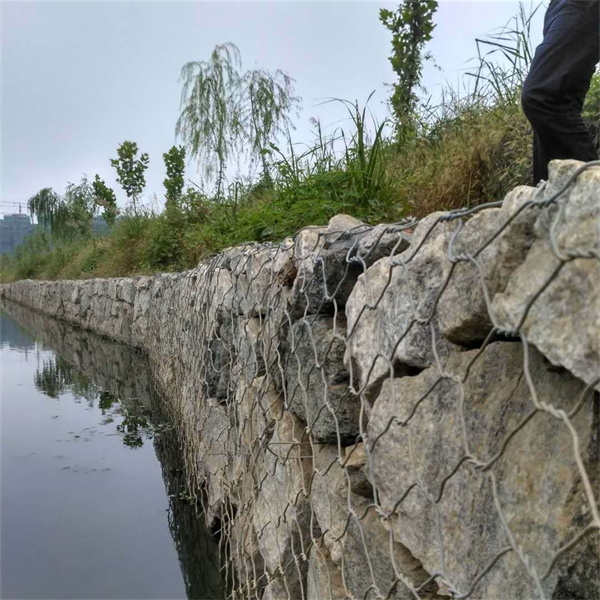Օգս . 17, 2024 05:54 Back to list
Understanding the Definition and Features of High-Quality Gabions for Effective Use
Understanding High-Quality Gabion Definition and Importance
Gabions are wire mesh cages filled with stones, gravel, or other materials, widely used in various civil engineering and landscaping applications. The term gabion comes from the Italian word gabbione, meaning large cage. High-quality gabions specifically refer to those that meet stringent standards in terms of materials, construction, and durability, ensuring their effectiveness in various uses, particularly in erosion control, retaining walls, and flood protection.
Definition of High-Quality Gabions
High-quality gabions are characterized by their robust design and construction. Typically, they are made from high tensile strength wire, often coated with materials like PVC or galvanized zinc to enhance their resistance to corrosion and environmental wear. The mesh structure integrated into gabions must have adequate openings to allow for drainage while ensuring that the filling material stays intact under various conditions.
In terms of size, high-quality gabions can vary but usually conform to standardized dimensions for ease of use and compatibility. They may be rectangular or cylindrical, and the choice will depend on the specific application and local regulations. The filling material used is also crucial; high-quality gabions often utilize clean, angular stones that offer better interlocking capabilities, thereby improving the overall structural integrity.
Importance of High-Quality Gabions
1. Durability and Longevity High-quality gabions are designed to withstand harsh environmental conditions, including extreme weather, flooding, and erosion. Their durability reduces the need for frequent maintenance and replacement, making them cost-effective in the long run.
high quality gabion definition

2. Erosion Control In areas susceptible to soil erosion, high-quality gabions provide an effective barrier that stabilizes the soil by reducing water runoff velocity and filtering sediment. This not only protects landscapes but also improves water quality by preventing sedimentation in water bodies.
3. Aesthetic Value Beyond their functional role, gabions can also enhance the aesthetic appeal of landscapes. When strategically placed and filled with attractive stones, gabions can serve as beautiful retaining walls, garden borders, or other landscape features that blend harmoniously with natural surroundings.
4. Environmental Benefits High-quality gabions promote sustainability by utilizing natural materials and reducing the need for concrete in construction. Their permeable nature allows for natural drainage and prevents water accumulation, minimizing the risk of flooding.
5. Versatility High-quality gabions are incredibly versatile and can be utilized in various applications, including river bank stabilization, highway construction, drainage systems, and sound barriers. Their adaptability makes them suitable for a variety of projects, both large and small.
6. Ease of Installation Compared to traditional construction methods, gabion installation is relatively straightforward. This reduces labor costs and construction time as the units can often be transported and assembled on-site without the need for specialized equipment.
Conclusion
In conclusion, high-quality gabions represent not just a functional solution to many engineering challenges but also signify a step towards sustainable construction practices. Their robust construction, durability, and versatility make them an ideal choice for a wide range of applications, from erosion control to landscape beautification. As the demand for environmentally friendly and efficient building materials continues to grow, high-quality gabions are poised to play a significant role in future construction and engineering projects, ensuring safety, stability, and sustainability. Understanding their definition and benefits is essential for architects, engineers, and landscape designers who aim to implement innovative and practical solutions in their work.
-
Why PVC Coated Gabion Mattress Is the Best Solution for Long-Term Erosion Control
NewsMay.23,2025
-
Gabion Wire Mesh: The Reinforced Solution for Modern Construction and Landscape Design
NewsMay.23,2025
-
Gabion Wall: The Flexible, Seismic-Resistant Solution for Modern Landscaping and Construction
NewsMay.23,2025
-
Gabion Wall Solutions: The Durable, Decorative, and Affordable Choice for Every Landscape
NewsMay.23,2025
-
Gabion Basket: The Durable and Flexible Alternative to Traditional Retaining Walls
NewsMay.23,2025
-
Gabion Basket: The Proven Solution for Slope Stability and Flood Control
NewsMay.23,2025
-
Versatility of Chain Link Fence Gabion
NewsMay.13,2025






